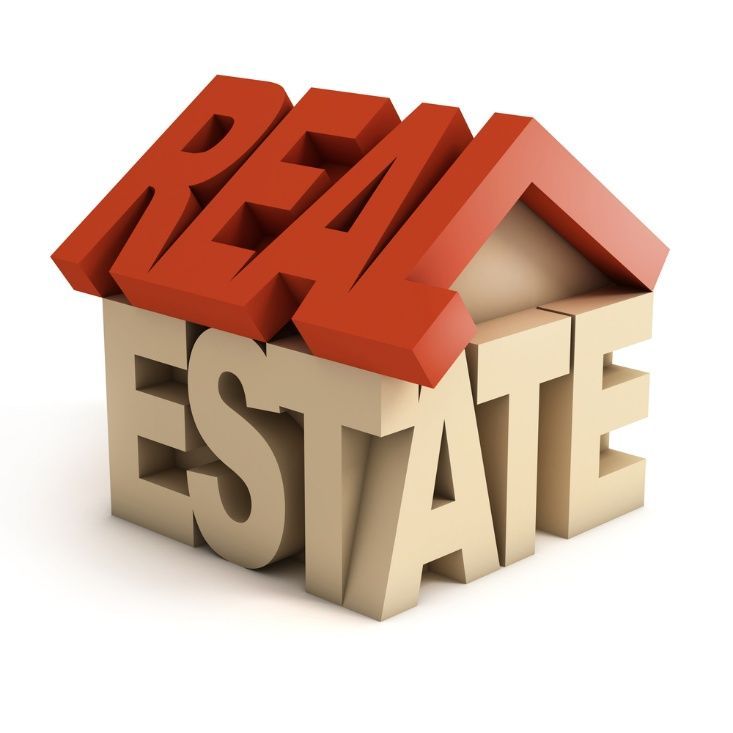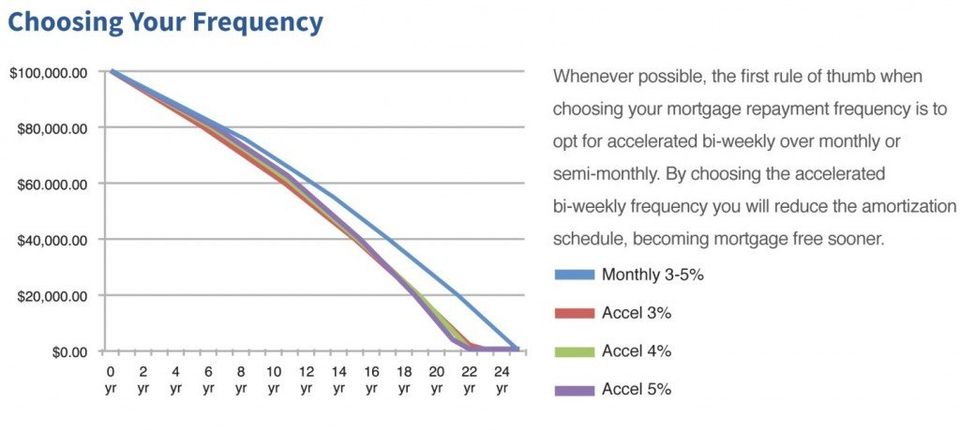The Power of Prepayment Options
Michael Hallett • March 2, 2016

Do you have a Mortgage Action Plan (MAP)? If not, it's time to plan your road MAP to mortgage free living. Every lender provides options, but very few take advantage of them. These mortgage benefits are called PREPAYMENT OPTIONS. The 3 most common prepayment options are: adjust the frequency at which the payments are made (weekly, semi-monthly, bi-weekly, monthly and accelerated), increase the monthly payment amount (there is a maximum monthly percentage) and lump sum (or balloon, also a maximum percentage of the original mortgage balance) payment. Make sure you know how to utilize them to the fullest and what your maximum amounts are. Don't feel obligated to maximize the prepayment options but at the very least make extra payments, your retirement savings will thank you later.
Only 32% of all mortgage borrowers exercise their contractual right to make significant efforts to accelerate repayment, including taking one or more of the following actions in the past year:
- 16% have voluntarily increased their monthly payments.
- 15% have made a lump sum (balloon payment) contribution to their mortgage.
- 6% have adjust or increased their payment frequency.
Monthly Increase Payment
If choosing an accelerated bi-weekly repayment schedule does not work for your plan, then maybe you might be able to consider adding an extra principal payment to your regular monthly mortgage commitment. The graphic below illustrates how the principal amount is reduced when utilizing the monthly increase prepayment option. By adding $100 to your monthly mortgage you can save $10,729 in interest and reduce the life or the mortgage by 5.9 years.
Annual Lump Sum or Balloon Payment
The last prepayment option you can utilize to pay down your mortgage sooner is called Balloon payment. You are contractually allowed to pay up to make annual payments on the anniversary date. The graphic below shows a $1,000 balloon payment. An annual contribution of $1,000 will reduce your mortgage by 5.2 years and save you $9,719 in interest.
My Personal Scenario
You are likely asking yourself right now, so what does Michael's road MAP look like. Well, I'm happy to share that with you. My current lender allows me to increase my monthly payments by 15%, make a annual lump sum payment of 15% (of the original mortgage balance) and/or double up my contractual minimum monthly commitment. I have elected to exercise my contractual right to utilize the 15% monthly increase to the maximum. My monthly contractual payment is $2,074.98. By maximizing the 15% monthly increase my adjusted payment is $2,386.23 which is an extra $311.24 per month. If I had decided to only make the minimum monthly payments of $2,074.98 then the life of my mortgage would be 25 years remaining at the end of this current term (maturing July 2017). However, with the extra payment of $311.24 per month I've effectively reduced the life of my mortgage to (currently) 21 years 2 months, even less when it matures in 17 months. If I were to keep maintaining the same course of action as above for the entire life of the mortgage the revised amortization would be reduced from 30 years to 15 years 9 months saving me $114,827.94 in interest.
Why not join the 32%ers elite club?! The contribution can be minimal and usually unnoticeable on a day-to-day basis, the pay-off is years sooner though. The power of making extra payments is overwhelming. Ask me how to increase your equity position. Your bank account will thank me later.
SHARE
MY INSTAGRAM
Mortgage Brokering meets mountain biking and craft beer. A couple months ago I set for a bike ride with the intention of answering few mortgage related questions, mission accomplished. Any good bike ride pairs nicely with a tasty beer which we enjoyed @parksidebrewery. Hope you see the passion I have for brokering, biking and beer. @torcabikes #mountainbikingmortgagebroker
TEASER alert...at thats what I think they call it in the business. Years ago a wrote a blog called BEERS BIKES AND MORTGAGES. I some how (in my head) blended all 3 topics into 1 blog. Simply put, I enjoy aspects of all 3 with each of them providing something different. I re-united with the talented Regan Payne on a project that I think will shed a bit more light on who I am and what I do. #craftbeer #mountainbike #mortgagebrokerbc #dlccanadainc
I saw this hat on Instagram, that very moment I knew I needed it. As a BC boy born and bred The Outdoorsman hat needed to be added to my collection. As someone who loves BC and most things outdoor, I’m now glad I have a cool hat to wear and fly the flag of BEAUTIFUL BRITISH COLUMBIA. It will be in my bag for all post-exploration celebratory cold pints. If you want to check them out or add one to your collection go to @nineoclockgun ...and yes my facial hair matches the hat as well.
View more

Bank of Canada maintains policy rate at 2.1/4%. FOR IMMEDIATE RELEASE Media Relations Ottawa, Ontario December 10, 2025 The Bank of Canada today held its target for the overnight rate at 2.25%, with the Bank Rate at 2.5% and the deposit rate at 2.20%. Major economies around the world continue to show resilience to US trade protectionism, but uncertainty is still high. In the United States, economic growth is being supported by strong consumption and a surge in AI investment. The US government shutdown caused volatility in quarterly growth and delayed the release of some key economic data. Tariffs are causing some upward pressure on US inflation. In the euro area, economic growth has been stronger than expected, with the services sector showing particular resilience. In China, soft domestic demand, including more weakness in the housing market, is weighing on growth. Global financial conditions, oil prices, and the Canadian dollar are all roughly unchanged since the Bank’s October Monetary Policy Report (MPR). Canada’s economy grew by a surprisingly strong 2.6% in the third quarter, even as final domestic demand was flat. The increase in GDP largely reflected volatility in trade. The Bank expects final domestic demand will grow in the fourth quarter, but with an anticipated decline in net exports, GDP will likely be weak. Growth is forecast to pick up in 2026, although uncertainty remains high and large swings in trade may continue to cause quarterly volatility. Canada’s labour market is showing some signs of improvement. Employment has shown solid gains in the past three months and the unemployment rate declined to 6.5% in November. Nevertheless, job markets in trade-sensitive sectors remain weak and economy-wide hiring intentions continue to be subdued. CPI inflation slowed to 2.2% in October, as gasoline prices fell and food prices rose more slowly. CPI inflation has been close to the 2% target for more than a year, while measures of core inflation remain in the range of 2½% to 3%. The Bank assesses that underlying inflation is still around 2½%. In the near term, CPI inflation is likely to be higher due to the effects of last year’s GST/HST holiday on the prices of some goods and services. Looking through this choppiness, the Bank expects ongoing economic slack to roughly offset cost pressures associated with the reconfiguration of trade, keeping CPI inflation close to the 2% target. If inflation and economic activity evolve broadly in line with the October projection, Governing Council sees the current policy rate at about the right level to keep inflation close to 2% while helping the economy through this period of structural adjustment. Uncertainty remains elevated. If the outlook changes, we are prepared to respond. The Bank is focused on ensuring that Canadians continue to have confidence in price stability through this period of global upheaval. Information note The next scheduled date for announcing the overnight rate target is January 28, 2026. The Bank’s next MPR will be released at the same time.

Following several challenging years, British Columbia’s housing market is beginning to stabilize. Prices, which experienced downward pressure in 2024–2025, have largely plateaued, with some areas showing modest gains. The recent Bank of Canada rate reduction to 2.25% has lowered borrowing costs, improving affordability and supporting market activity. Across the province, housing supply is gradually increasing. Builders are delivering more condos, townhomes, and single-family homes, easing some supply constraints. Meanwhile, population growth, fueled by domestic migration and international immigration, continues to support long-term housing demand. Key Statistics Home sales: BC home sales declined slightly in 2025 by approximately 1.1% to 73,650 units but are projected to rebound in 2026 by around 8.8%, reaching roughly 80,150 units. Average home price: The provincial average price dipped modestly by 0.9% in 2025 to $972,800, with forecasts projecting an increase of 3.2% in 2026 to approximately $1,004,000. Benchmark home price: As of April 2025, the BC benchmark home price stood at $953,500, down 1.3% year-over-year. Listings and inventory: Active listings are expected to exceed 40,000 units in 2025, the highest in more than a decade. Market Forecast 2025: Market remains relatively flat, with modest declines in sales and prices. 2026: Sales and prices begin to recover, with modest upward trends. Early 2027: Market stabilizes, reflecting measured growth and improved affordability. Regional differences will continue. Urban condo markets may see slower price appreciation, while suburban and smaller communities with limited supply could experience stronger gains. What This Means for Buyers and Homeowners Prospective buyers: 2026 is an opportunity to enter a more balanced market with lower interest rates. Current homeowners: Refinancing or mortgage renewal could be advantageous in this period of slightly lower rates. Investors: Localized analysis is critical, as neighborhood inventory and rental demand will determine returns. Bottom Line: BC’s housing market is shifting from a cooling phase toward a period of gradual recovery. Lower interest rates, steady population growth, and increased housing supply point to a healthier, more sustainable market. Buyers, homeowners, and investors should plan strategically, recognizing that while growth is returning, the pace will be measured and regionally variable.











































































































